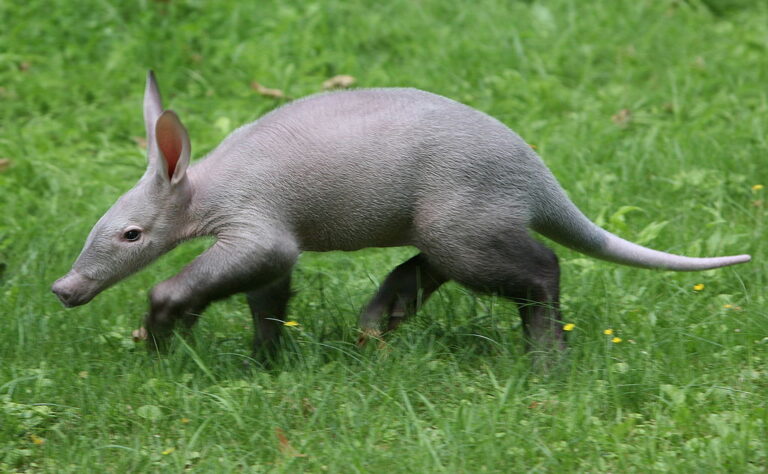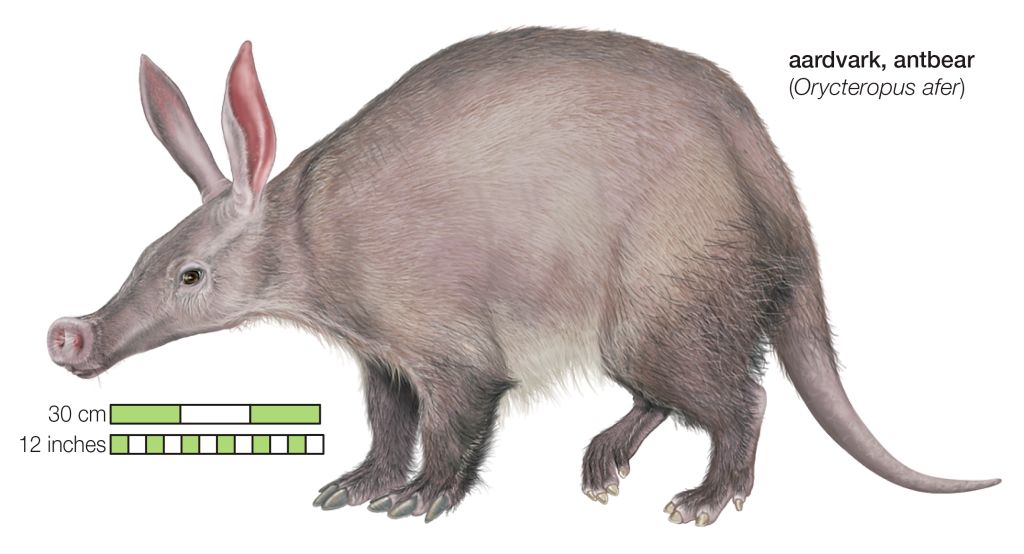All About Aardvarks
This mammal is referred to as a living fossil.
By: Kirsten Brooker | February 19, 2025 | 955 Words

(Photo credit should read STEPHANIE PILICK/DPA/AFP via Getty Images)
Beyond their unique appearance, aardvarks are an unusual and fascinating species of mammal. They make their homes in different habitats primarily south of the Sahara Desert in Africa. Though they are often compared to pigs (the name aardvark means earth pig in the Afrikaans language), their physical makeup is one-of-a-kind. Let’s continue exploring the life, origins, and oddities of the creature known as an aardvark.
- Kingdom – Animalia
- Phylum – Chordata
- Class – Mammalia
- Order – Tubulidentata
- Family – Orycteropodidae
- Genus – Orycteropus
- Scientific Name – Orycteropus afer
Ancestry and Evolution
The study of fossils suggests that early relatives of aardvarks inhabited Earth since the Paleocene, a period that lasted from 66 to 56 million years ago. Aardvark fossils date to around 5 million years ago. The evolutionary makeup of the animal proves that it is not closely related to any other mammal, and it seems to have evolved independently over the years. It is the sole member of the order Tubulidentata and is most closely related to species that have been extinct for more than 2 million years.
While many animals seem to evolve, the aardvark has remained primarily the same and is therefore often referred to as a living fossil. Scientists are intrigued by their physical features, capabilities, and habits that make them stand alone as mammals.
What Do They Look Like?
As mentioned before, aardvarks are often compared to pigs. This is due to their overall size (typically 130 to 180 pounds), shape, and long pig-like snout. In reality, their closest living relatives are believed to be elephants. Their bodies are nearly hairless, and their thick skin protects them from the hot African sun and insect bites. Their ears and nostrils open and close to prevent dust, dirt, and insects from entering.
Aardvarks are burrowers, or diggers, equipped with large claws and spade-like feet to assist them. Their front legs are slightly shorter than their back legs, which also helps their inclination to dig. They can move up to two feet of soil in just 15 seconds. Aardvarks are typically pale yellow in color, though their constant digging causes their skin to stain a brownish-red. These mammals have an excellent sense of smell that comes in handy since their eyesight is relatively poor.
Maybe the strangest part of the aardvark’s anatomy is its teeth. Different from all other mammals, the aardvark’s 12-14 teeth are composed of many straw-like tubes. Each tooth contains up to 1,500 tubes that are constantly replaced and regrown.
Diet and Habitat

(Photo By Encyclopaedia Britannica/UIG Via Getty Images)
Due to the immense heat and presence of predators in Africa, aardvarks are nocturnal animals. Their favorite meals consist of ants and termites of which they can consume up to 50,000 per day. If ants and termites aren’t readily available, the animal also will munch on beetles and insect larvae. Their long, sticky tongues scoop up their dinner and swallow it whole. Some ants are too large to be eaten whole. In those cases, aardvarks have otherwise useless incisors in the back of their mouths that can chew up larger prey.
Aardvarks are found in sub-Saharan areas and live in burrows beneath the ground. They tend to avoid swampy and rocky areas as it is difficult to find safe and sufficient living space. The burrows are large enough for a human to enter, and much of their day is spent hanging out and sleeping in their subterranean homes.
Reproduction and Lifespan
Aardvarks are overall solitary animals. They interact only with others of their species around two years of age when it is mating season, which comes once a year. After about seven months in gestation, females give birth to a single offspring called a cub. The babies weigh around four pounds at birth and are pink and hairless. After about two weeks, cubs begin to venture out of the burrows with their mothers, though they are not weaned until they are about three months old. Around six months of age, the cubs will separate from their mothers and go off on their own. Aardvarks are believed to live around 20 years in captivity, but their lifespan in the wild is unknown.
The number of aardvarks in existence is also unknown by animal scientists and enthusiasts.
Predators
Aardvarks remain rather safe in their deep burrows, but there are still animals out there that threaten their existence. Lions, leopards, hyenas, and large snakes (primarily pythons) present a threat to the mammals. However, they are not completely defenseless against them. An aardvark can be rather aggressive as it is equipped with large claws and strong back legs that are used defensively against predators.
The only other main threat to these creatures is humans. Aardvarks are hunted for meat and for their body parts, which are made into charms. Both human and animal predators pose a risk to the animal’s habitat.
Famous Aardvarks
A couple of aardvarks throughout history have reached the status of famous. The first is from an animated TV show that ran 1969-1971 named The Ant and the Aardvark. It was a series of 17 short cartoons that starred a blue aardvark who attempts to catch and eat his nemesis, a red ant named Charlie.
A second, more modern famous aardvark is Arthur Read, who originated in Marc Brown’s 1976 book Arthur’s Nose. The book stars an 8-year-old aardvark who lives with his little sister, mother, and father. The book was eventually made into an animated TV series that aired on PBS. The character, Arthur, made number 26 on TV Guide’s list of the “50 Greatest Cartoon Characters of All Time.”

- Aardvark fossils date to 5 million years ago.
- Aardvarks are nocturnal animals.
- Aardvarks fight predators with large claws and strong back legs.
















